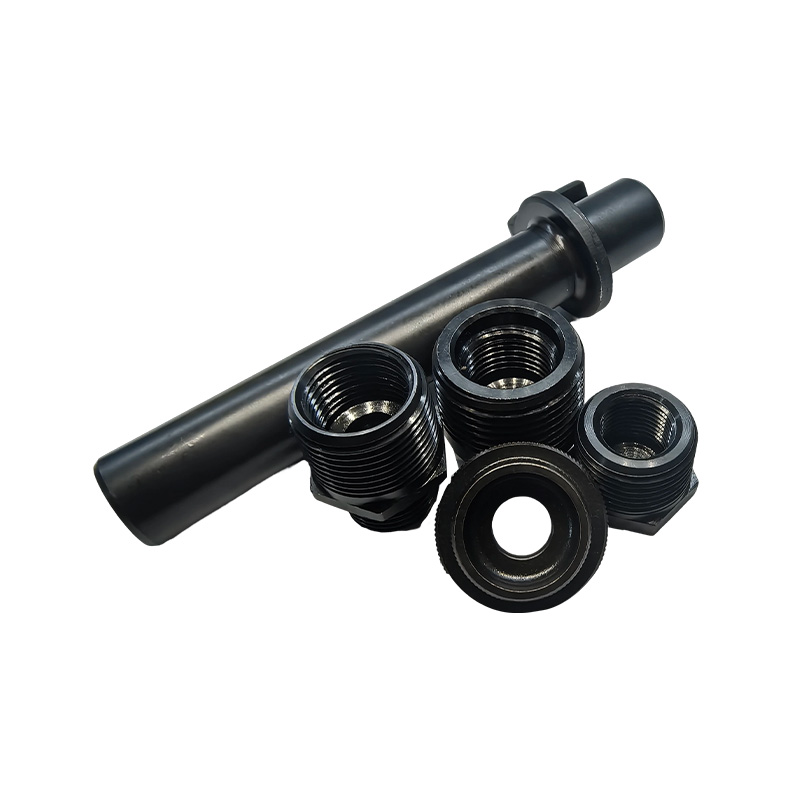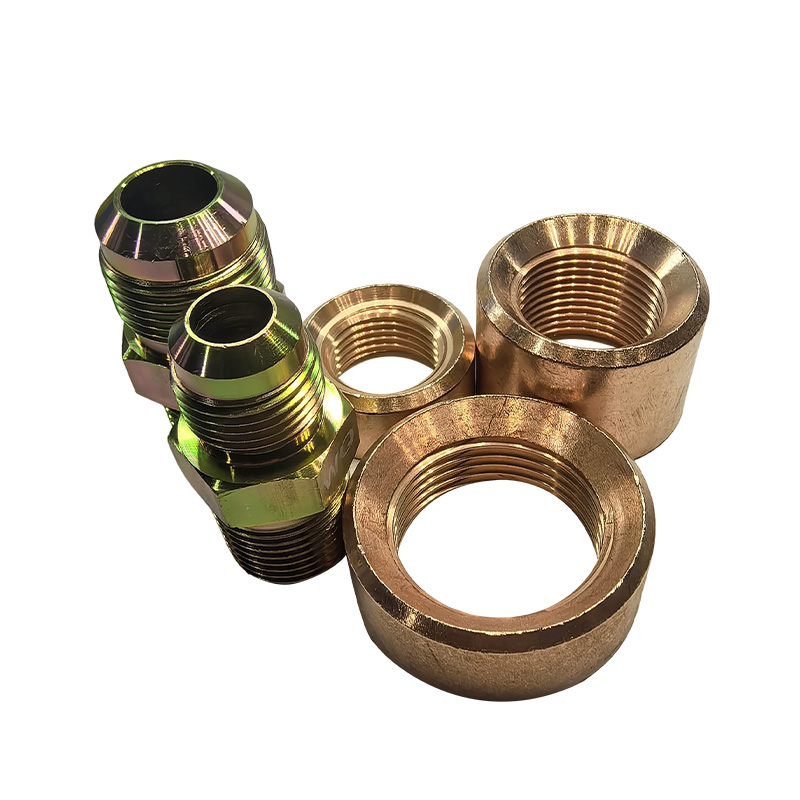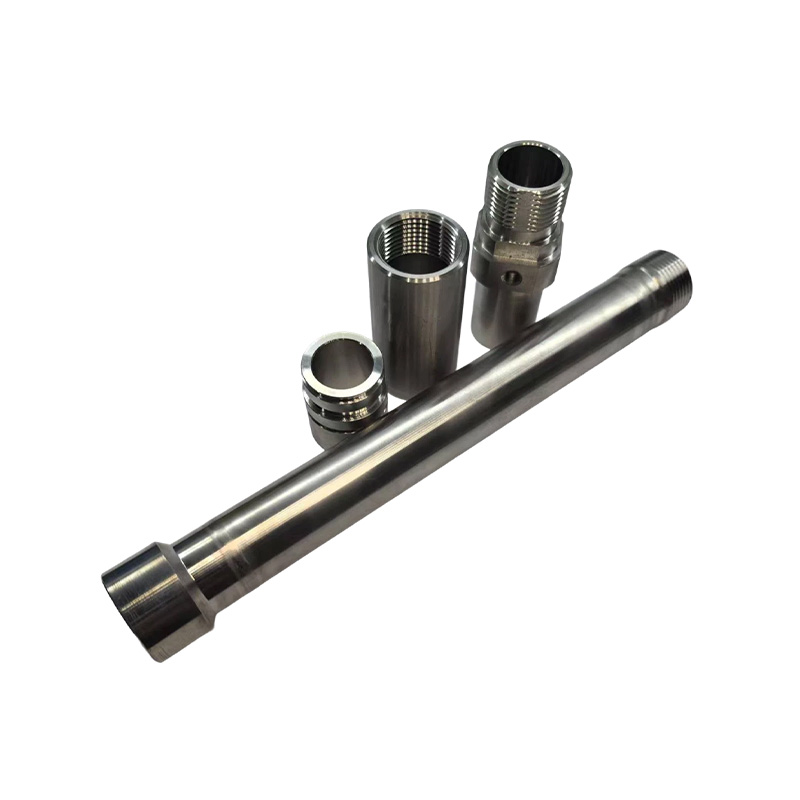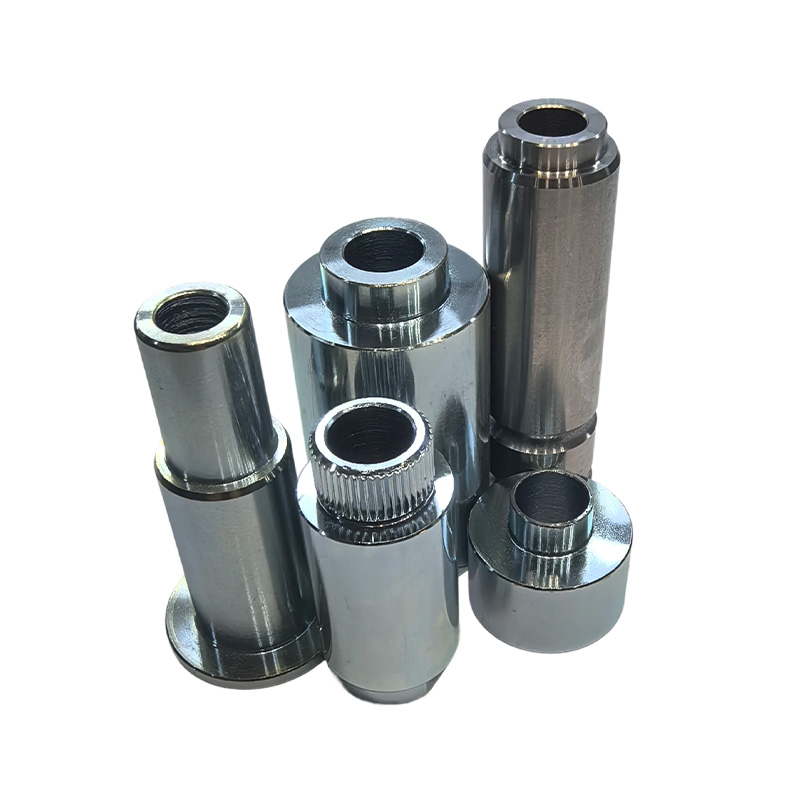How do empty pipe joints for water heaters ensure a leak-proof seal?
Release Time : 2025-11-18
In modern home hot water systems, the water heater is the core device, and the reliability of its installation and connection directly affects water safety and home comfort. Among these, water heater joints—especially empty pipe joints—are crucial components connecting the inlet and outlet pipes to the water heater body, bearing the responsibility of transmitting high-temperature, high-pressure water. Leaks can range from affecting the user experience to causing flooding, short circuits, or even safety accidents.
1. Precision Structural Design: Multiple Sealing Guarantees
Empty pipe joints typically employ an "insert-type quick-connect" structure, the core of which lies in the internal integrated sealing ring and retaining spring system. When a hose or copper pipe is inserted into the joint, the front end pushes the internal O-ring seal to compress and deform, tightly fitting against the pipe wall; simultaneously, the stainless steel retaining spring at the rear automatically engages with the outer wall of the pipe to prevent detachment. This dual mechanism of "front sealing and rear securing" ensures both axial sealing and reliable mechanical locking force. Some high-end joints also employ a double O-ring design. Even if one O-ring ages under prolonged high-temperature use, the other can still maintain basic sealing function, significantly improving safety.
2. Scientific Sealing Principle: Seamless Fit Achieved Through Elastic Deformation
The core of sealing lies in "gap-free contact surfaces." Empty pipe joints commonly use sealing rings made of high-temperature resistant silicone or EPDM materials. These materials are soft and elastic at room temperature, and upon contact with water or under pressure, they can quickly fill the tiny gaps between the pipe and the inner wall of the joint, forming a continuous and dense sealing interface. Especially when water heaters are operating, the water temperature can reach over 60℃. High-quality sealing rings not only do not harden and crack, but also further enhance the sealing effect due to thermal expansion. In addition, the inner cavity of the joint is usually precision ground, with the surface roughness controlled at the micron level, ensuring uniform stress on the sealing ring and avoiding localized leakage.
3. Premium Material Selection: Temperature, Pressure, and Aging Resistance
To cope with the long-term high-temperature and high-pressure working environment of water heaters, the body of empty pipe joints is mostly made of brass or high-strength engineering plastics. Brass possesses excellent mechanical strength, corrosion resistance, and thermal conductivity, and is easily machined into high-precision internal threads and sealing grooves; while engineering plastics are lightweight and have good insulation properties, making them suitable for the inlet and outlet of electric water heaters. The sealing ring material must pass national drinking water hygiene standards certification to ensure that it does not leach harmful substances after long-term immersion in high-temperature water, and also possesses good ozone resistance, UV resistance, and anti-aging properties, with a service life of over 10 years.
4. Standardized Installation Process: Details Determine Success or Failure
Even the best connectors will leak if improperly installed. Correct installation is the final step to achieving a leak-proof seal. First, before inserting the pipe, check that the pipe opening is flat and free of burrs to avoid scratching the sealing ring; second, push the pipe vertically and at a uniform speed into the connector until it is fully inserted, listening for a "click" sound to indicate that the retaining spring is locked; finally, never forcibly bend the hose or apply lateral force, as this may damage the sealing structure. For threaded connections, a suitable amount of PTFE tape should be wrapped around the joint, but not excessively, otherwise the threads may not tighten properly, leading to leaks.
Although small, water heater empty pipe joints are a crucial link in ensuring the safe operation of a home's hot water system. Through precise structural design, scientific sealing principles, reliable material selection, and standardized installation procedures, they collectively build a leak-proof defense. As the saying goes, "the details reveal the truth," and it is these seemingly insignificant components that silently protect the warmth and peace of mind of countless households.
1. Precision Structural Design: Multiple Sealing Guarantees
Empty pipe joints typically employ an "insert-type quick-connect" structure, the core of which lies in the internal integrated sealing ring and retaining spring system. When a hose or copper pipe is inserted into the joint, the front end pushes the internal O-ring seal to compress and deform, tightly fitting against the pipe wall; simultaneously, the stainless steel retaining spring at the rear automatically engages with the outer wall of the pipe to prevent detachment. This dual mechanism of "front sealing and rear securing" ensures both axial sealing and reliable mechanical locking force. Some high-end joints also employ a double O-ring design. Even if one O-ring ages under prolonged high-temperature use, the other can still maintain basic sealing function, significantly improving safety.
2. Scientific Sealing Principle: Seamless Fit Achieved Through Elastic Deformation
The core of sealing lies in "gap-free contact surfaces." Empty pipe joints commonly use sealing rings made of high-temperature resistant silicone or EPDM materials. These materials are soft and elastic at room temperature, and upon contact with water or under pressure, they can quickly fill the tiny gaps between the pipe and the inner wall of the joint, forming a continuous and dense sealing interface. Especially when water heaters are operating, the water temperature can reach over 60℃. High-quality sealing rings not only do not harden and crack, but also further enhance the sealing effect due to thermal expansion. In addition, the inner cavity of the joint is usually precision ground, with the surface roughness controlled at the micron level, ensuring uniform stress on the sealing ring and avoiding localized leakage.
3. Premium Material Selection: Temperature, Pressure, and Aging Resistance
To cope with the long-term high-temperature and high-pressure working environment of water heaters, the body of empty pipe joints is mostly made of brass or high-strength engineering plastics. Brass possesses excellent mechanical strength, corrosion resistance, and thermal conductivity, and is easily machined into high-precision internal threads and sealing grooves; while engineering plastics are lightweight and have good insulation properties, making them suitable for the inlet and outlet of electric water heaters. The sealing ring material must pass national drinking water hygiene standards certification to ensure that it does not leach harmful substances after long-term immersion in high-temperature water, and also possesses good ozone resistance, UV resistance, and anti-aging properties, with a service life of over 10 years.
4. Standardized Installation Process: Details Determine Success or Failure
Even the best connectors will leak if improperly installed. Correct installation is the final step to achieving a leak-proof seal. First, before inserting the pipe, check that the pipe opening is flat and free of burrs to avoid scratching the sealing ring; second, push the pipe vertically and at a uniform speed into the connector until it is fully inserted, listening for a "click" sound to indicate that the retaining spring is locked; finally, never forcibly bend the hose or apply lateral force, as this may damage the sealing structure. For threaded connections, a suitable amount of PTFE tape should be wrapped around the joint, but not excessively, otherwise the threads may not tighten properly, leading to leaks.
Although small, water heater empty pipe joints are a crucial link in ensuring the safe operation of a home's hot water system. Through precise structural design, scientific sealing principles, reliable material selection, and standardized installation procedures, they collectively build a leak-proof defense. As the saying goes, "the details reveal the truth," and it is these seemingly insignificant components that silently protect the warmth and peace of mind of countless households.







